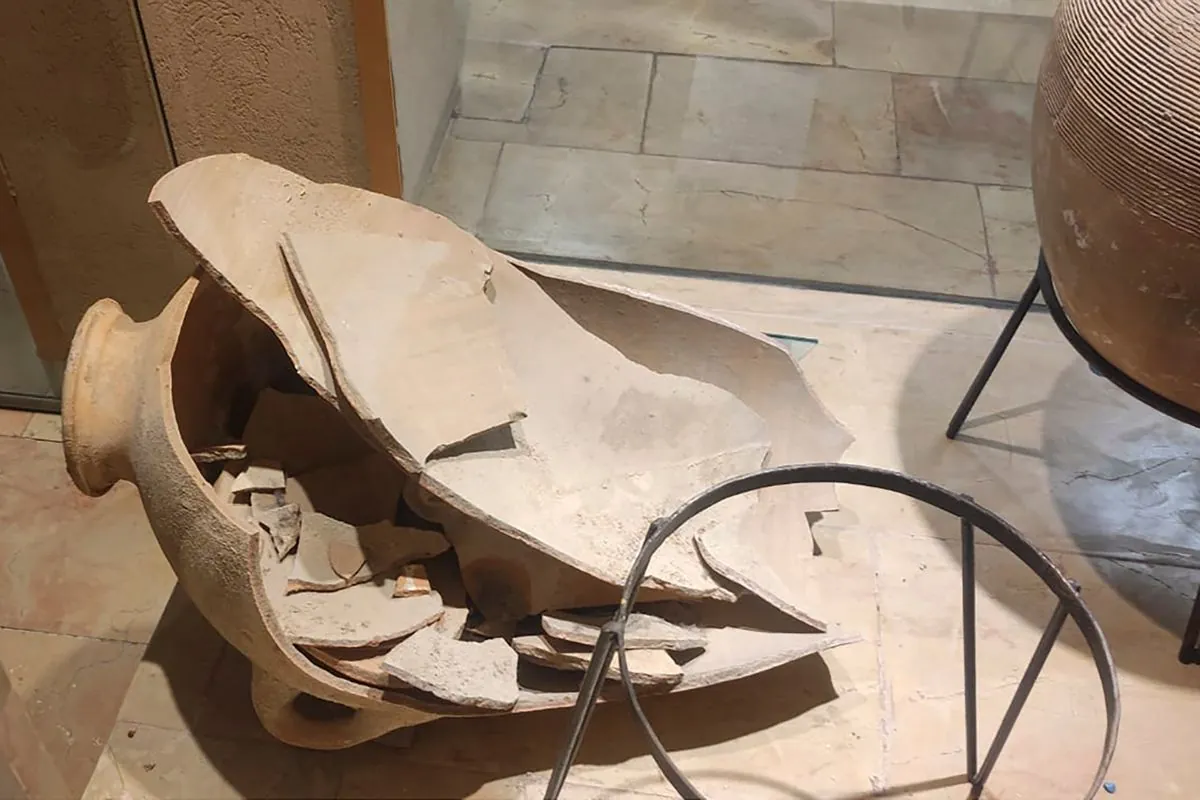In a remarkable turn of events, a rare Bronze Age jar, accidentally broken by a young visitor, has been successfully restored and returned to its display at the Hecht Museum in Haifa, Israel. The incident, which occurred last month, involved a 4-year-old boy from northern Israel who inadvertently tipped over the ancient artifact during a family visit.
Alex Geller, the child's father, described his son as exceptionally curious. Upon hearing the crash, Geller's immediate thought was, "please let that not be my child." The jar, dating back to between 2200 and 1500 B.C., had been a centerpiece of the museum's collection for 35 years, representing one of the few complete containers of its size from that era.
The Hecht Museum, associated with Haifa University, is known for its open display policy, allowing visitors to explore history without glass barriers. Inbal Rivlin, the museum's director, explained that this approach aligns with their vision of providing an immersive historical experience.
In response to the incident, the museum took an innovative approach. They invited the Geller family back for a special visit, offering a hands-on activity to demonstrate the restoration process. This decision transformed an unfortunate accident into an educational opportunity, aligning with the museum's commitment to public engagement and historical preservation.
Roee Shafir, a restoration expert at the museum, led the repair efforts. The process, while relatively straightforward due to the jar's completeness, employed cutting-edge techniques. Experts utilized 3D technology, high-resolution videos, and specialized adhesives to meticulously reconstruct the artifact.
"Well, he's just a kid. So I think that somehow it touches the heart of the people in Israel and around the world."
The restoration was completed in less than two weeks, a testament to the skill and efficiency of the museum's conservation team. While the repaired jar now displays minor hairline cracks and a few missing pieces, its impressive size and historical significance remain intact.
This incident highlights the delicate balance museums must strike between accessibility and preservation. The Bronze Age, spanning from around 3300 BC to 1200 BC in the Near East, was a period of significant technological advancements, including the development of pottery and the first writing systems. Artifacts like this jar provide crucial insights into ancient trade, cultural exchanges, and daily life.
The Hecht Museum's approach to this incident reflects a broader trend in museology, emphasizing public engagement and education. Israel, with over 200 museums – one of the highest per capita rates globally – has been at the forefront of innovative museum practices.
As the restored jar returns to its place in the museum, now accompanied by a new "please don't touch" sign, it stands as a testament to the resilience of ancient artifacts and the dedication of modern conservators. This event not only preserved a piece of history but also created a new story, bridging the gap between the Bronze Age and our modern era.
